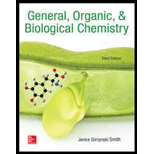
Interpretation:
The difference between kinetic energy and potential energy needs to be explained with an example for each.
Concept Introduction:
The two types of energies are:
Potential energy
Kinetic energy
Potential energy is defined as the amount of energy stored in a system due to its position. Kinetic energy is defined as the energy of a system due to its motion.
Answer to Problem 6.25P
Potential energy − Stored energy
Kinetic energy − Energy of motion
Explanation of Solution
Energy is required to do the work. Energy can neither be created nor destroyed. The total energy of the universe is constant. Energy can be converted into different forms of energy such as potential energy and kinetic energy.
Kinetic energy is the energy of motion. This can be observed while an object is moving from one place to another. A Ball falls down the hill has kinetic energy.
Potential energy is the stored energy, it issimply the energy which is caused by the position of an object. A ball on the top of a hill has stored energy as potential energy.
Thus, potential energy − Stored energy
Kinetic energy − Energy of motion
Want to see more full solutions like this?
Chapter 6 Solutions
General, Organic, & Biological Chemistry
- The combustion of methane, is an exothermic process. Therefore, the products of this reaction must possess (higher/ lower) total potential energy than do the reactants.arrow_forwardA small car is traveling at twice the speed of a larger car, which has twice the mass of the smaller car. Which car has the greater kinetic energy? (Or do they both have the same kinetic energy?)arrow_forwardDefine the following terms: potential energy, kinetic energy, path-dependent function, state function, system, surroundings.arrow_forward
- Describe the interconversions of potential and kinetic energy in a moving pendulum. A moving pendulum eventually comes to rest. Has the energy been lost? If not, what has happened to it?arrow_forwardHow fast (in meters per second) must an iron ball with a mass of 56.6 g be traveling in order to have a kinetic energy of 15.75 J?arrow_forwardExplain the difference between heat capacity and specific heat of a substance.arrow_forward
- A piece of chocolate cake contains about 400 calories. A nutritional calorie is equal to 1000 calories (thermochemical calories), which is equal to 4.184 kJ. How many 8-in-high steps must a 180-lb man climb to expend the 400 Cal from the piece of cake? See Exercise 28 for the formula for potential energy.arrow_forwardConsider an airplane trip from Chicago, Illinois, to Denver, Colorado. List some path-dependent functions and some state functions for the plane trip.arrow_forwardWhen calcium carbonate, CaCO3 (the major constituent of limestone and seashells), is heated, it decomposes to calcium oxide (quicklime). CaCO3(s)CaO(s)+CO2(g);H=177.9kJ How much heat is required to decompose 21.3 g of calcium carbonate?arrow_forward
 Living By Chemistry: First Edition TextbookChemistryISBN:9781559539418Author:Angelica StacyPublisher:MAC HIGHER
Living By Chemistry: First Edition TextbookChemistryISBN:9781559539418Author:Angelica StacyPublisher:MAC HIGHER World of ChemistryChemistryISBN:9780618562763Author:Steven S. ZumdahlPublisher:Houghton Mifflin College DivChemistry: Matter and ChangeChemistryISBN:9780078746376Author:Dinah Zike, Laurel Dingrando, Nicholas Hainen, Cheryl WistromPublisher:Glencoe/McGraw-Hill School Pub Co
World of ChemistryChemistryISBN:9780618562763Author:Steven S. ZumdahlPublisher:Houghton Mifflin College DivChemistry: Matter and ChangeChemistryISBN:9780078746376Author:Dinah Zike, Laurel Dingrando, Nicholas Hainen, Cheryl WistromPublisher:Glencoe/McGraw-Hill School Pub Co Chemistry for Today: General, Organic, and Bioche...ChemistryISBN:9781305960060Author:Spencer L. Seager, Michael R. Slabaugh, Maren S. HansenPublisher:Cengage Learning
Chemistry for Today: General, Organic, and Bioche...ChemistryISBN:9781305960060Author:Spencer L. Seager, Michael R. Slabaugh, Maren S. HansenPublisher:Cengage Learning World of Chemistry, 3rd editionChemistryISBN:9781133109655Author:Steven S. Zumdahl, Susan L. Zumdahl, Donald J. DeCostePublisher:Brooks / Cole / Cengage Learning
World of Chemistry, 3rd editionChemistryISBN:9781133109655Author:Steven S. Zumdahl, Susan L. Zumdahl, Donald J. DeCostePublisher:Brooks / Cole / Cengage Learning





